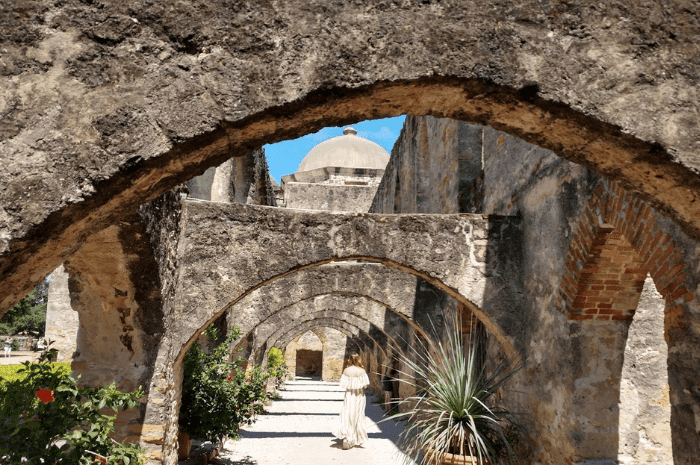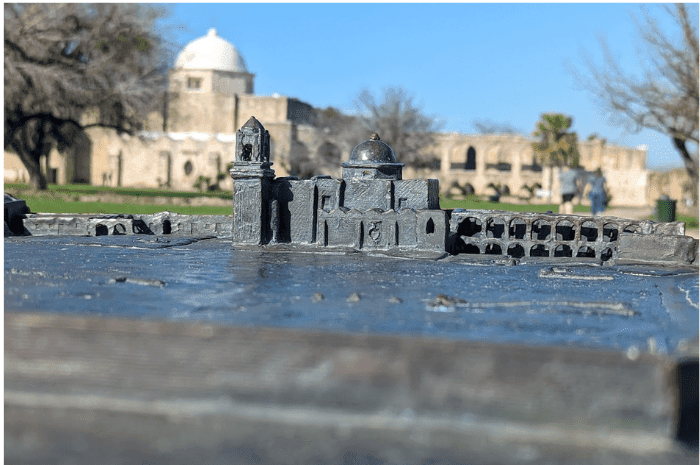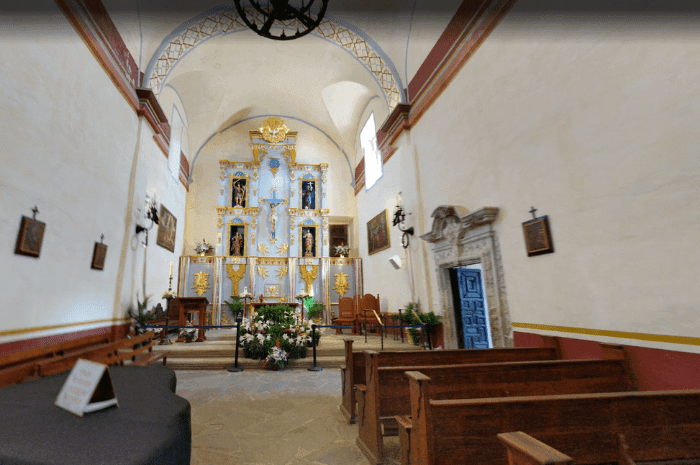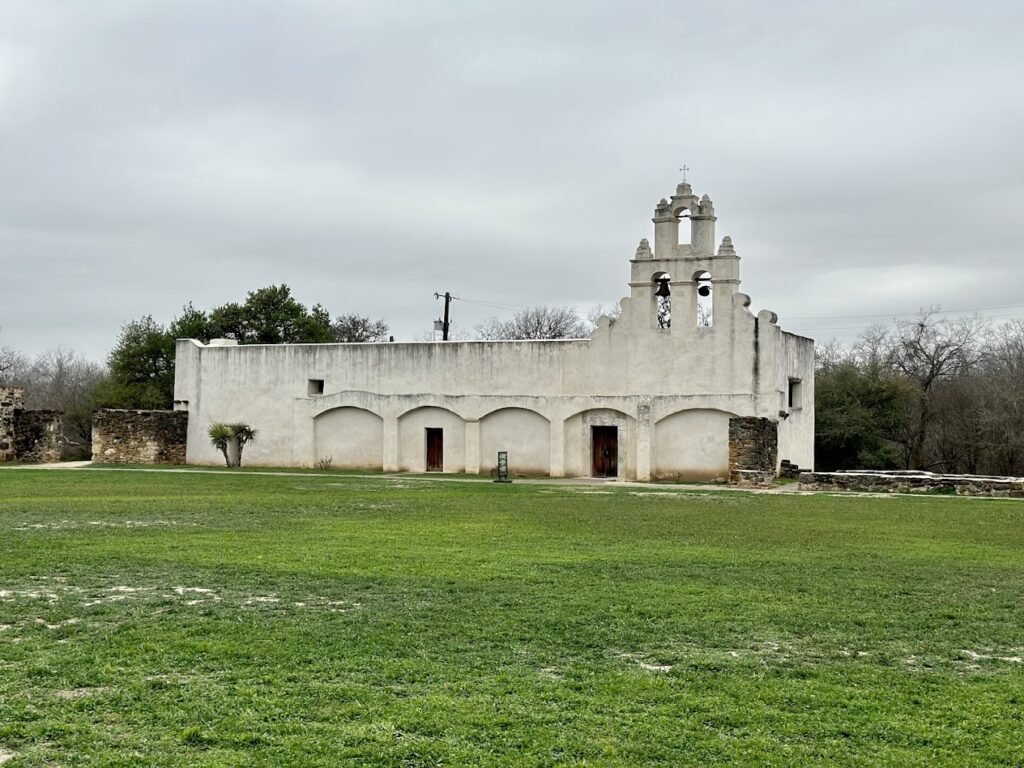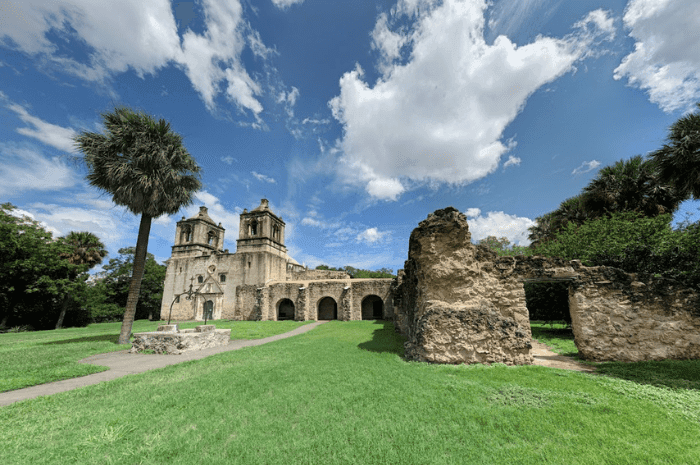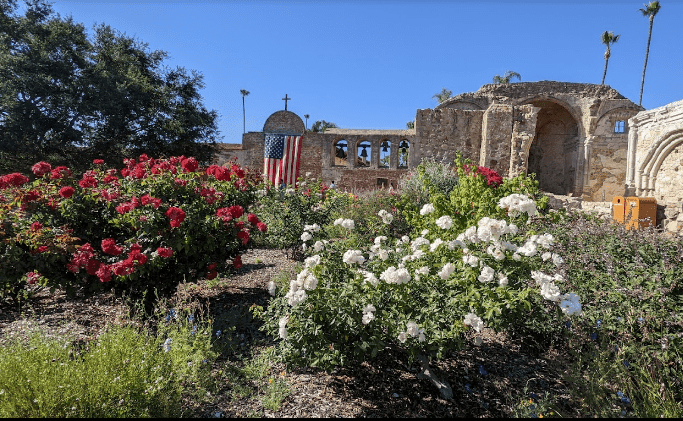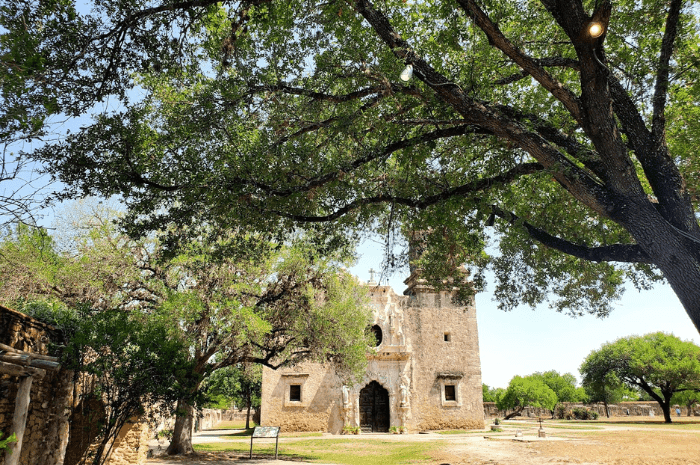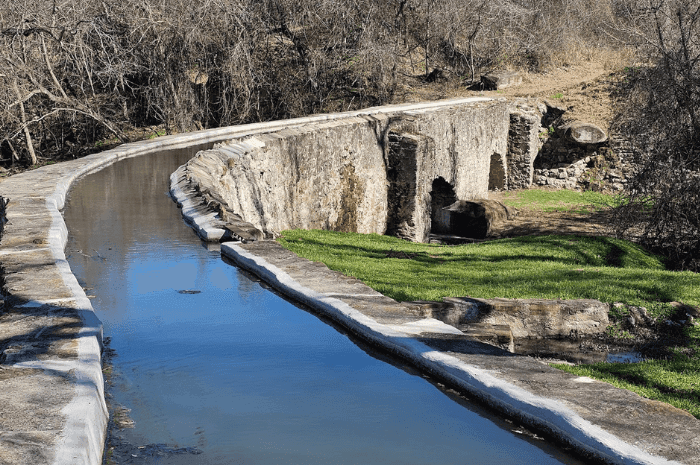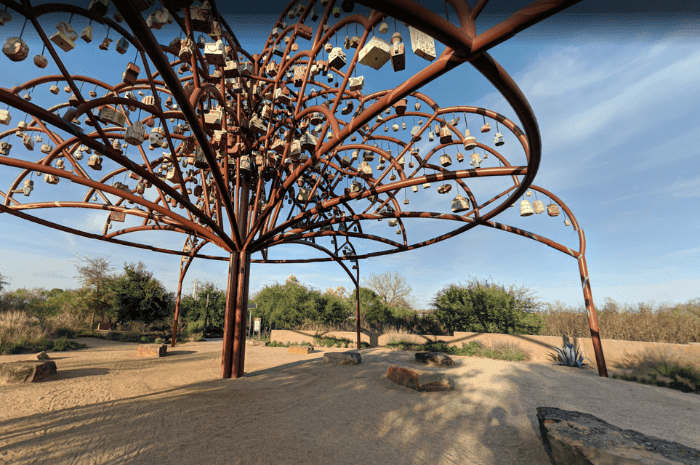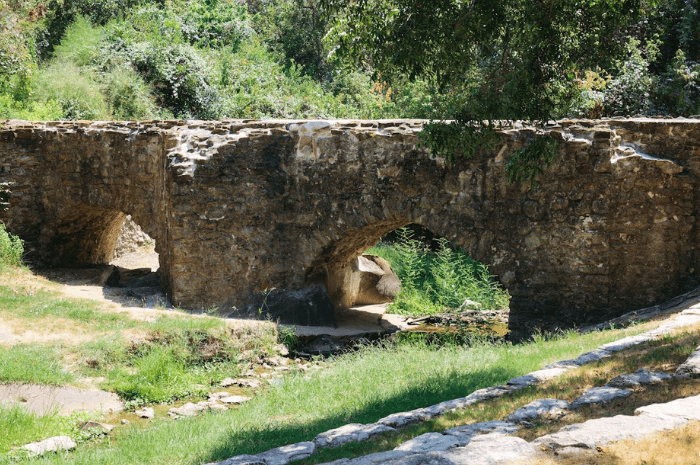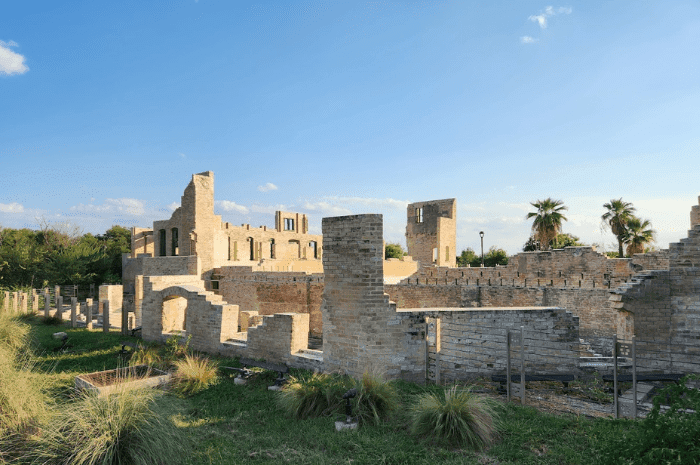San Antonio Missions National Historical Park, clearly and loudly. Tucked in the center of San Antonio, Texas, this cultural gem is alive in stone and adobe, a centuries-old narrative. It’s a community, a holy history, and a window into a society molded by religion, suffering, and resiliency, not just a tourist destination.
Four surviving Spanish colonial missions—Mission Concepción, Mission San Jose, Mission San Juan, and Mission Espada – San Antonio Missions National Historical Park—tell the tale of 18th-century frontier life when Spain’s vision of the New World stretched into what is now South Texas. They are not ruins. These are living works of shared memory, energetic historical locations, and functioning parishes.
These are missions in San Antonio, not museum pieces. There’s something rather human here, whether you’re following ancient stone paths or thronging under tall bell towers. Something genuine. This is something that deserves your attention.
Location, Website, and Contact Information:
San Antonio Missions National Historical Park runs down the south bank of the San Antonio River. Car, bike, and even foot access to the San Antonio Missions Park comes from the Mission Walk San Antonio, the San Antonio Mission Trail, also known as the San Antonio Mission Trail by Car. Covering a straight line, it links all four missions of San Antonio across an 8-mile distance.
Official website :
https://www.nps.gov/saan/index.htm.
Address:
6701 San Jose Drive, San Antonio, TX 78214.
Phone:
(210) 932-1001
The official site contains current data for 2025, whether you search for San Antonio Missions National Historical Park tickets, park hours information, guided tour timings, or wish to schedule group visits. This is the best place to find information about pet rules and accessibility services, seasonal event announcements, and information about the missions in San Antonio. Four mission sites provide free parking.
One legacy of the Spanish missions
The legacy of this park defines it fundamentally. In the 1700s, Spain built five missions in San Antonio as part of a network spread across the Americas. Here are four of them. Kept maintained. These missions were not only places of worship. They were actual towns, not just concepts. Las Misiones San Antonio were places where Indigenous people lived, traded, farmed, and combined Catholic and native customs.
These San Antonio Historic Missions are unique in that they are whole. The original mission layout, ancient dwelling quarters, and stone walls still contribute to depicting colonial life as a whole. Unlike many old locations, these sites are thriving Catholic parishes offering frequent events. Walking across these grounds is entering a history that seems contemporary. It is a rare and rich experience combining architecture, landscape, and culture.
The Oldest Stone Church
Aim One must-see stop is Nuestra Señora de la Purísima Concepción de Acuña, or Mission Concepción, located at Mission Concepción, 807 Mission Rd, San Antonio, TX 78210. Constructed in 1755, it is now the oldest unaltered stone church in America. Though its twin bell towers and enormous walls define the skyline, the interior frescoes really take center stage. The church still hosts events; the fading paintings spark ablaze with color when the sun strikes just right.
These were instruments for narrative, which means teaching faith through imagery, not merely adornment. Concepcion Park, San Antonio, Texas, sits nearby, enhancing the beauty of this sacred place. From outside, flagstone courtyards and church garden walkways take you to adjacent remains of residential quarters and granaries. The goal seems modest and respectful. The result is a space for pauses, inhales, and connections key to San Antonio Missions National Historical Park, San Antonio, TX.
Goal San Jose: Queen of the Missions
Called the “Queen of the Missions,” Mission San Jose, San Antonio, is the biggest and most completely rebuilt. Constructed in 1720, it is well-known for the finely carved baroque masterpiece known as the “Rose Window.” The whole picture is provided on this site: dwelling quarters, grain store, convento, walls, and church.
There is all. Either go on a self-guided mission tour or one run under ranger leadership. Only the sense of tranquility the cathedral provides rivals its enormous dome and magnificent façade. San Antonio Mission San Jose is a central feature on any San Antonio Mission Tour. The San Antonio Missions National Historical Park Visitor Center is also worth a visit for its background, displays, and maps. Do not skip the short film. You’ll find a map of San Antonio Missions National Historical Park and San Antonio Missions Trail details.
Mission San Juan:
Mission San Juan Capistrano’s narrative is strong, even though its majestic images are lacking those of San Jose. Designed in the 1730s, Mission San Juan in San Antonio gave trade and farming more of her attention. The mission included farmland, orchards, and irrigation ditches (acequia systems) that are still visible today. There is a quiet, rustic quality to this mission. Restored in the 20th century, the whitewashed church comes off as modest and friendly. Paths around here lead to the San Antonio River, allowing guests to combine history with the environment.
Here are traces of dwellings and workshops. This monastery is a place of working hands, not only of prayer. Mission San Juan Capistrano San Antonio, TX, also referred to as San Juan Capistrano San Antonio, San Juan Capistrano Mission San Antonio, TX, and Mission San Juan San Antonio, Texas, embodies rural spirituality.
Mission Espada National Historical Park
Mission Espada San Antonio Mission Espada in San Antonio, Texas, evokes diverse feelings. It is smaller, quieter, and somewhat more distant than other states. It has that unvarnished survival edge. The church is small, yet incredibly beautiful. The Espada Aqueduct, a working watercourse created by the friars and Indigenous laborers still channeling water today, particularly shines out. Exactly; it still works.
Stroll the gardens, appreciate the old masonry chapel, Mission Espada Church in San Antonio, and stop at the aqueduct. It reminds us of the ingenuity early mission life required. Mission Espada in San Antonio remains a marvel within Mission Espada – San Antonio Missions National Historical Park.
Architectural Design and Vision of
Every mission has a spirit that shows itself in the construction. Combining Spanish and Indigenous forms produced something unique: architecture with significant symbolic meaning rather than only practical use. You will find finely hand-carved stone flourishes, domed ceilings, and arched stone entryways. Two missions never seem to be the same. Mission San Jose, San Antonio, TX, is big and elaborate. Mission Concepción San Antonio suffers but still exudes grace.
Mission San Juan Capistrano, San Antonio, Texas, is subtle but pragmatic. Mission Espada San Antonio is small yet rooted. Taken together, they chronicle adaptability, community building, and the potency of location. Use your time carefully. See the ceilings, down at the stones, and across the courtyards. Every little element counts in the San Antonio Missions National Historical Park photos you’ll take home.
Cultural Influence of Missions National Historical Park:
Built by Indigenous people, the San Antonio Missions housed Indigenous families. Sometimes freely, sometimes not: tribes like the Coahuiltecans were pulled into the mission system. This was cultural integration in progress, not only a religious endeavor.
Daily living consisted of rigid plans, Catholic doctrine, and learning to fit European farming practices. Not one-sided, though. Influenced the missionaries in return were Indigenous customs, foodways, and languages. You find those influences in the architecture, the artwork, and even the music—clear evidence in the San Antonio Missions’ legacy.
Trekking and Bicycling the Mission Trails:
Using the Mission Reach Trail, part of the San Antonio Bike Trails, is among the easiest approaches to enjoying the park. This picturesque, paved path connects all four missions along the San Antonio River, winding kilometers among native grasslands, picnic grounds, and public art projects.
Rent a bike or go for a long stroll; you will find river vistas, wildlife, and simple access to every San Antonio Mission location. The area is well-designed with water fountains and rest facilities. It is quite tranquil, safe, and beautiful. The route allows you to explore the surroundings at your speed, therefore rendering the journey equally as significant as the sites themselves. Please review the Map of San Antonio Mission Trail and the San Antonio Missions Map before you head out. If you like a heavy ride, you can look through Morgan’s Wonderland.
Events and Guest Advice for Missions National Historical Park:
From holiday celebrations and special Masses to cultural events and night excursions, San Antonio Missions National Park often organizes gatherings. These gatherings give the area vitality and provide uncommon access to some areas of the city. Top advice is either right before dusk or early in the morning.
There are fewer crowds and light streams on the stones that are very attractive. Put on casual shoes. Keep yourself hydrated. And honor the hallowed character of every location; they are still places of vibrant religion. First, for revised schedules and pamphlets, stop by the San Antonio Missions National Historical Park Visitor Center. It makes it most enjoyable.
Volunteering and Educational Possibilities:
The San Antonio Missions National Park is a place to learn and help as much as it is a place to view. Teachers can schedule instructional field excursions using customized lesson plans; the park provides junior ranger events, youth programs, and even virtual learning modules for distant schools.
From trail maintenance to informative speeches, volunteers assist with everything. There is a way to become engaged regardless of your interests, history, the natural world, or people. It’s about making sure the park is significant and lively for the next generation. If you want to go with kids after visiting this one, you can consider San Antonio’s Kiddie Park for a little fun.
Frequently Asked Questions, or FAQs:
Is there an entry cost for the Mission National Historical Park?
Admissions to San Antonio Missions National Historical Park are absolutely free.
Can one have pets inside the Mission National Historical Park?
Indeed, only outside of buildings and on leashes. See to it you tidy up after them.
Missions National Historical Park is easily accessible.
Sure. Wheelchair access exists for all four missions and the Visitor Center; however, certain old paths may not be level.
Are any of the missions functioning churches?
Of course. Every mission still has Catholic offerings.
Is it okay if I snap pictures at Mission National Historical Park?
Indeed, be courteous, especially during religious services and activities.
Where am I supposed to start?
Given that Mission San Jose, San Antonio, TX, boasts the primary San Antonio Missions National Historical Park Visitor Center, it’s a decent starting place.
Conclusion:
San Antonio Missions National Historical Park, San Antonio, TX 78214, transcends mere structures. The park embodies memory in stone, trust in adobe, and culture in every minute detail. Whether your motivations are architectural, spiritual, or the calm strength of history itself, you will leave transformed.
It is more than merely a site of visitation. This is a place to feel. And it is what justifies all.


